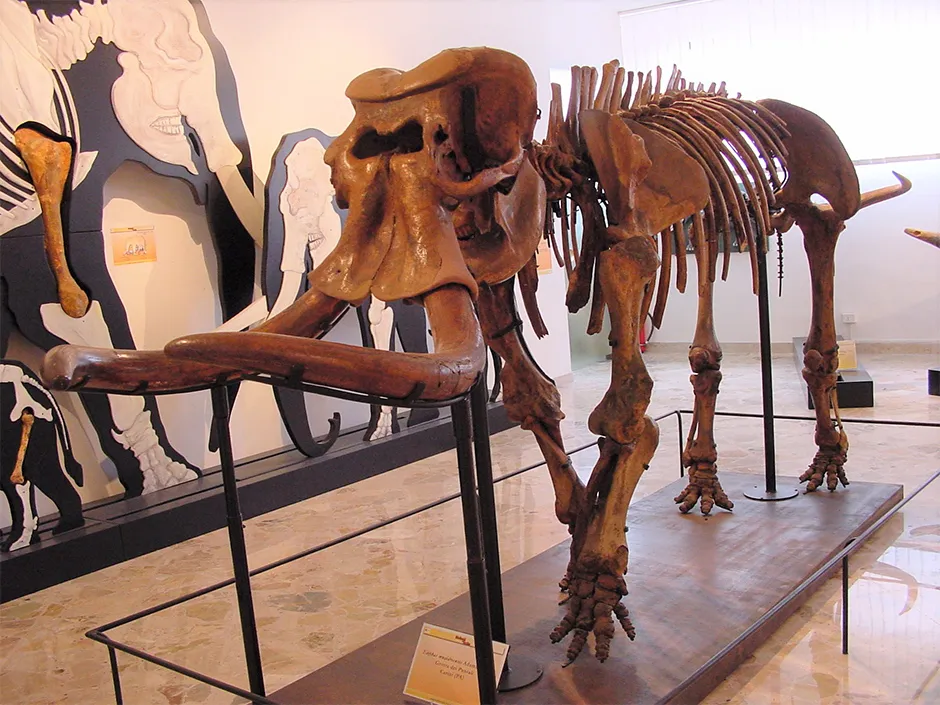An extinct species of dwarf elephant halved in height and shrank by almost 85 per cent in body mass over a period of just 350,000 years after evolving from one of the largest land mammals that ever lived, scientists have found.
In a phenomenon described as “truly striking”, Palaeoloxodon mnaidriensis, which became extinct around 19,000 years ago, lost more than 8,000kg in weight and almost 2m in height after diverging from the much larger straight-tusked elephant Palaeoloxodon antiquus, which was almost 4m tall and weighed 10,000kg.
P. antiquuswas much larger than modern-day elephants: an adult could easily have rested its chin on the back of a bull African savannah elephant.
A team of international researchers, which included scientists from Nottingham Trent University, the Universities of York and Cambridge, and the Natural History Museum in London, analysed molecular and fossil evidence to calculate the dwarfing rate of the species.
They found that the dwarf elephant, which lived on the island of Sicily, reduced in weight and height by a maximum of 200kg and 4cm per generation, over a period of up to 352,000 years.
To put it into context, the researchers said the size reduction of P. mnaidriensis is comparable to modern humans dwarfing to approximately the size of a Rhesus monkey.
Read more about elephants:
- The story of two mammoths, preserved forever in a fight to the death
- Elephant populations surveyed from space using artificial intelligence
“The magnitude of dwarfing resulting from this rapid evolutionary process is truly striking, resulting in a loss of body mass of almost 85 per cent in one of the largest ever terrestrial mammals," said Dr Axel Barlow, an expert in palaeogenomics and molecular bioscience in Nottingham Trent University’s School of Science and Technology.
“As the descendants of giants, the extinct dwarf elephants are among the most intriguing examples of evolution on islands.”
The large, straight-tusked P. antiquus lived on the European mainland between 800,000 and 40,000 years ago and it is thought that these mammals colonised Sicily some time between 70,000 and 200,000 years ago. Living in an insular and isolated environment accelerated the process of evolution for the island creatures, in what is referred to as “evolution in action” and a new species, P. mnaidriensis, soon emerged.

The researchers believe that the dwarfing process began once the Sicilian elephant diverged from its mainland relative.
For their study, the team analysed the remains of a dwarf elephant unearthed from Sicily’s Puntali Cave, thought to be between 50,000 and 175,000 years old.
They examined a piece of petrous bone – part of the skull that holds the inner ear – which is known to preserve DNA better than other parts of the skeleton.
“By combining ancient DNA with paleontological evidence we can show the timing of observable evolutionary changes with greater accuracy,” said Barlow.
The research is published in the journal Current Biology.
How intelligent are elephants?
Asked by: Len Irvine, London
Elephants are remarkable. They live in tight-knit groups, and will help injured animals or bring them food and water. They show grief when a family member dies and sometimes bury their dead or cover them with leaves. They also have long memories and complex mental maps, solve problems such as piling up blocks to reach food, and use branches and rocks as tools.
Remarkably, they can also understand what pointing means. Although pointing seems obvious to us and many dogs understand it, most other species, including chimpanzees, cannot.
Read more: